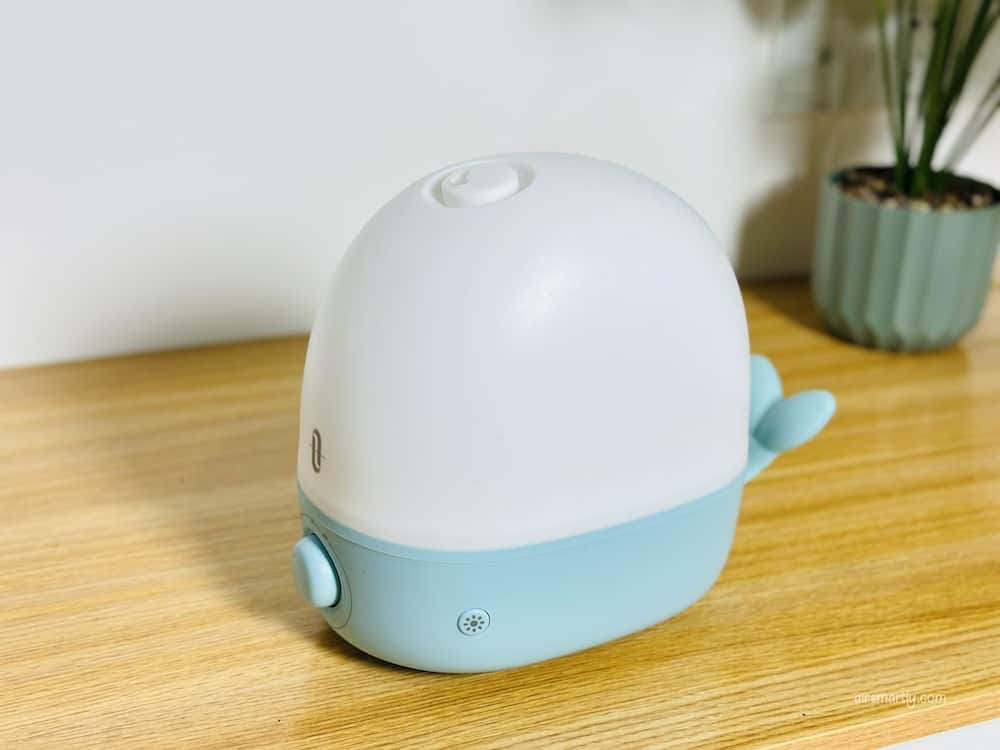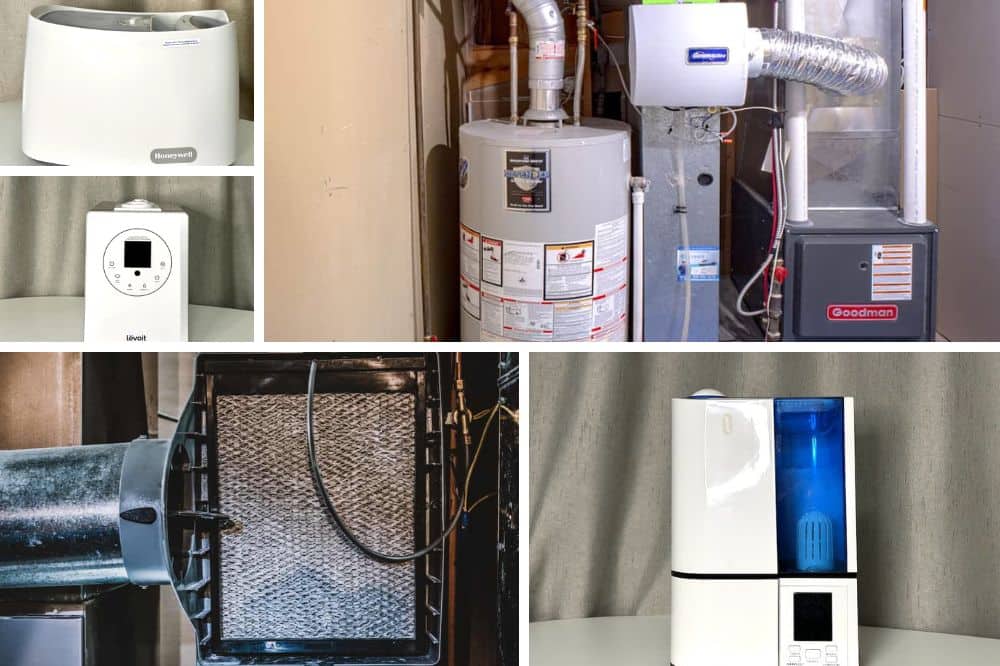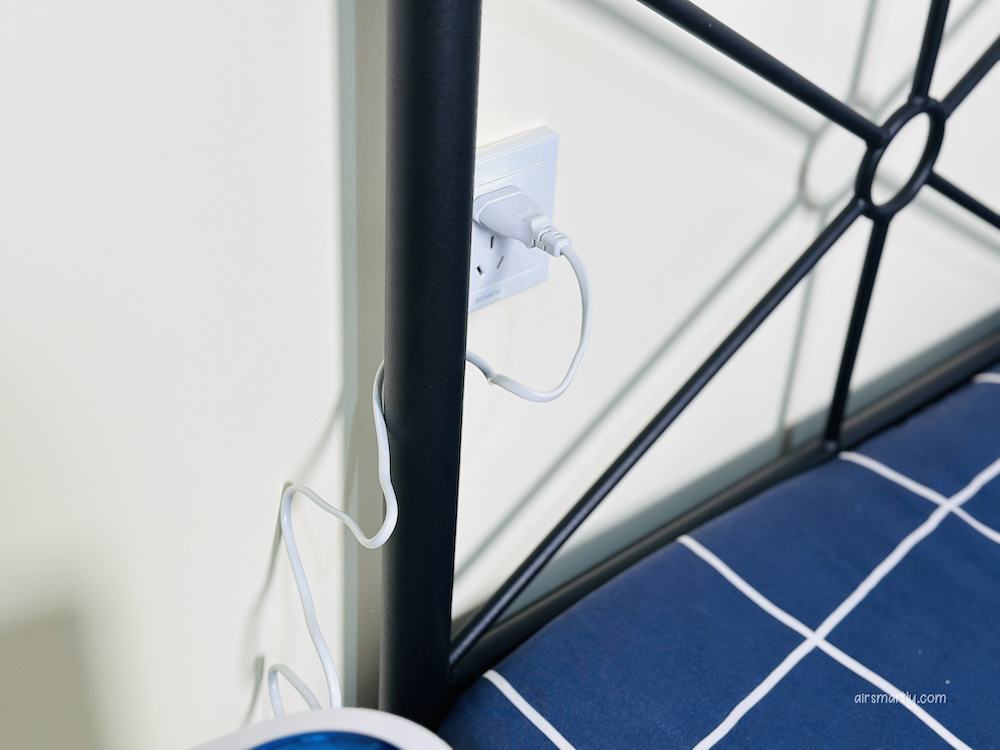A humidifier is a great household appliance to combat dryness in cold and dry climates. By adding moisture content to the air, people who stay in the room can feel much more comfortable.
Between the warm mist humidifier and cool mist humidifier, many people prefer the latter since it doesn’t use boiling water, which is safer for kids and pets.
There are two popular types of cool mist humidifiers: evaporative and ultrasonic. If you are on the fence about which one to choose, you have come to the right place. This post will compare evaporative humidifiers and ultrasonic humidifiers from different aspects to help you make the right decision.
How does an evaporative humidifier work?

All the humidifiers serve the same purpose – adding moisture content to the room, but they work on various principles.
Evaporative humidifiers have been in use for many years. In our childhood, mom often places a pot of water in the room to increase the indoor humidity by means of the evaporation process of water.
Evaporative humidifiers are the advanced pot of water to some extent, but they can evaporate the water more quickly with the help of a built-in fan.
Meanwhile, a wick inside the humidifier can filter the mineral, bacteria, and other contaminants.
How does an ultrasonic humidifier work?
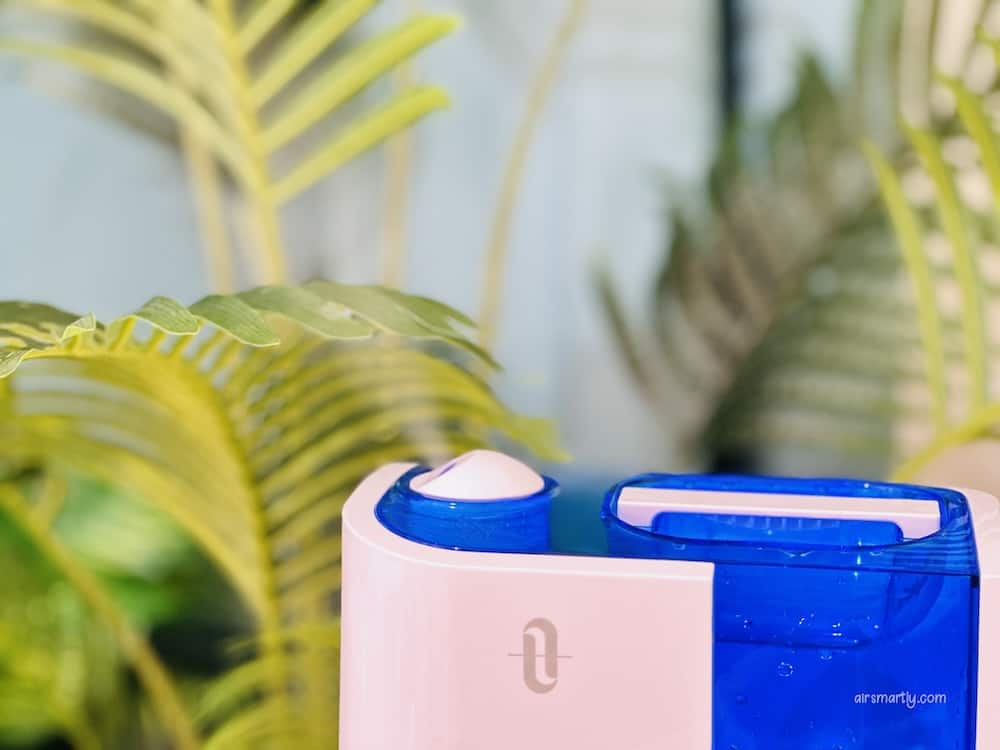
Ultrasonic humidifiers don’t contain a fan or wick as evaporative humidifiers do.
There is a metal diaphragm inside the ultrasonic humidifier. It can vibrate at a high frequency and break down the water into the ultra-fine mist. When the mist is discharged into the air, it will improve the humidity gradually. We call this process “ultrasonic atomization.”
Many appliances today make use of ultrasonic atomization, such as nebulizers. Even though patients with asthma often use both humidifiers and nebulizers together, they are different.
Evaporative vs. ultrasonic humidifier: differences in 9 aspects
From what I mentioned above, you may already know some differences between ultrasonic humidifiers and evaporative humidifiers. Still, I want to go more in-depth and compare them from many essential aspects.
1. Principle
Again, ultrasonic humidifiers and evaporative humidifiers work on different principles.
Ultrasonic humidifiers release mist by breaking down the water into tiny water droplets, whereas evaporative humidifiers increase humidity by the natural evaporation, but the fan speed up the process.
Sometimes, you can’t see the mist coming out of an evaporative model even though it is running smoothly because the evaporation process will not necessarily form visible water vapor.
2. Cost
Nobody likes setting a budget while shopping for a humidifier, but they are essential. Evaporative humidifiers used to be a lot cheaper than ultrasonic models, but the difference decreased as more and more manufacturers started to make ultrasonic humidifiers.
Today, many evaporative models have higher price tags than ultrasonic units, and the cost of wicking filters may add to the difference.
Evaporative humidifiers need wicks to operate, and manufacturers suggest replacing the wick every 1 to 3 months, depending on how frequently you use it. While wicks are cheap but the cost can add up over time.
It is highly possible that you will pay more for an evaporative model eventually.
3. Appearance
If aesthetic appeal is your priority, ultrasonic humidifiers would be better than evaporative humidifiers.
You can find a myriad of ultrasonic units with various shapes and advanced features. Some are in a teardrop shape, and some look like an elephant with a small tail. Many brands offer models that are specially designed for children.
Beyond that, some units come with a built-in projector that can show interesting patterns on the wall. The romantic atmosphere created helps people to sleep better. Some have LED nightlights to show you the way at night.
In short, you can find many interesting models in the ultrasonic humidifier category.
Compared to ultrasonic units, evaporative units tend to be a bit bulkier. This is due to the fact that it should include a fan and a wick inside, which limits the creativity of designers.
But evaporative humidifiers may not be as traditional as you imagined. You can still find some with different shapes, such as the Vicks Starry Night model I have.
4. Size
There is no absolute winner in this round.
You can find models of different sizes in both categories. Some are very high and are suitable for putting on the floor. Some are incredibly tiny that you can carry them in a bag.
You should choose based on how many squares your room has. A humidifier that is too powerful or too weak could cause adverse effects.
However, finding an ultrasonic model is slightly easier if you are looking for a small unit.
5. Noise levels
No humidifier is entirely silent. In case you don’t know, most of us are not able to hear the humming sound from an ultrasonic humidifier because the frequency is too high.
On the contrary, we can hear the noise coming from an evaporative model. As we discussed earlier, these models employ a fan to boost evaporation. While a fan is essential for it to work, it is a source of noise as well.
We have recorded the noise level of a Vornado evaporative humidifier. You can get a better idea by watching it.
The noise level varies, but ultrasonic models are quieter than evaporative models in most cases. For those easily awakened by the noise, an ultrasonic humidifier is one you should go for.
6. Health benefits and risks
Both evaporative and ultrasonic humidifiers are good at combating respiratory infections, remedying dry skin, and relieving sore throats. As long as they operate normally, both models could bring you the same health benefits.
However, ultrasonic humidifiers are more prone to health risks. Ultrasonic units directly break down the water and send the water particles out through the outlet, and there is no filter or heating element in the unit. It means that the contaminants in the water will come out along with the water particles.
The humidifier’s water tank could become a breeding ground for mold and bacteria if you add tap water to it. Then these germs will get into the air, posing a health threat to your health. The mineral buildup can form white dust that extends your time on cleaning.
If you struggle to commit to regular cleaning, using distilled water is a sensible idea.
Unlike ultrasonic units, evaporative humidifiers use wicks to filter out bacteria, mold, dust, and other impurities. Therefore, they have less chance of spreading germs into the air.
7. Installation
Installing a humidifier is just like a walk in the park, no matter which types you choose. Fill the reservoir, plug it in, and then adjust the settings, you are all set.
The only difference is that you need to replace the wick when using an evaporative model. This process is very straightforward, though.
8. Clean and maintenance
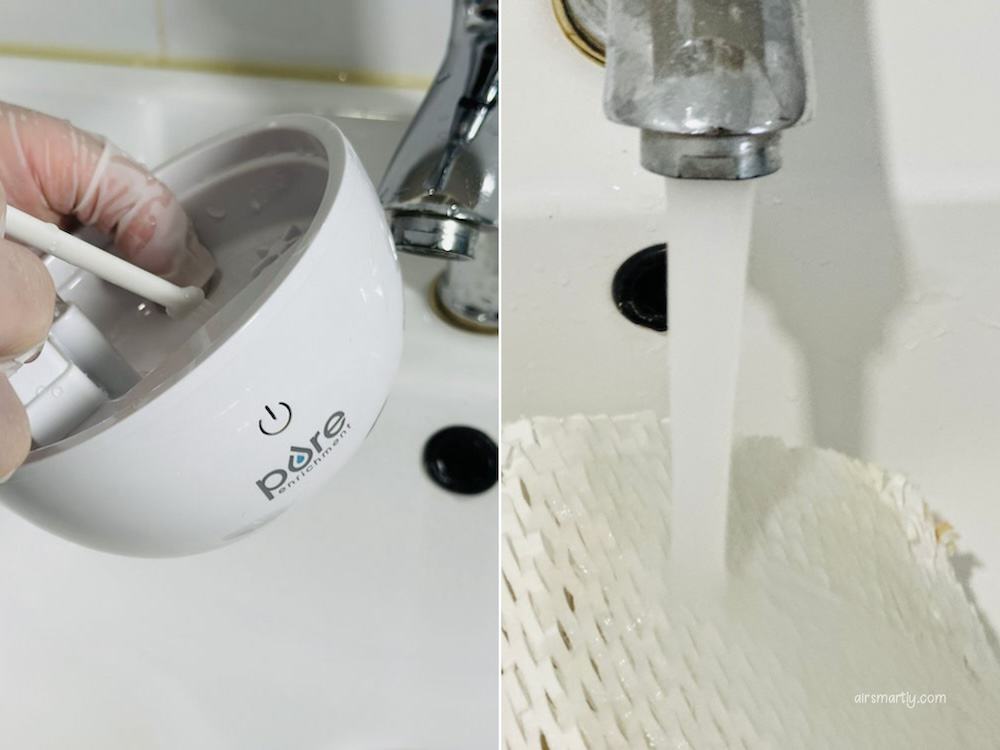
Ultrasonic humidifiers have no means to kill or filter out the impurities in the water. These impurities can either settle down in the device and cause clogs or disperse into the air. You should clean it thoroughly at least once a week for your health and the device. We also recommend you change the water daily.
The mineral buildup may be hard to remove initially, but vinegar could be an excellent cleanser to help you out.
Even though evaporative humidifiers use wicks to remove impurities, you still have to clean them at least once a week. The cleaning task would be easier to finish. While You don’t have to worry too much about the white dust and mold spores, you have to replace the filter regularly.
9. Lifespan
There is no big difference between these two types of humidifiers when it comes to lifespan. Using distilled water could help extend the lifespan for both two, especially ultrasonic units.
You can expect they can last for around 5 years because the parts can malfunction and get clogged with time.
Evaporative vs. ultrasonic humidifier: which one is better for you?
When comparing evaporative humidifiers with ultrasonic humidifiers, it is hard to give a clear-cut answer about which one is better.
If you loathe exposing yourself to mold spores and white dust, an evaporative humidifier is a better choice. However, if you prefer a quiet environment, an ultrasonic humidifier is a much better choice. In addition to that, they tend to have beautiful appearances and cheaper prices. But it is harder to keep it clean.
So you should make your own decision based on your preferences and health conditions. Both of them would improve your life in some ways.


